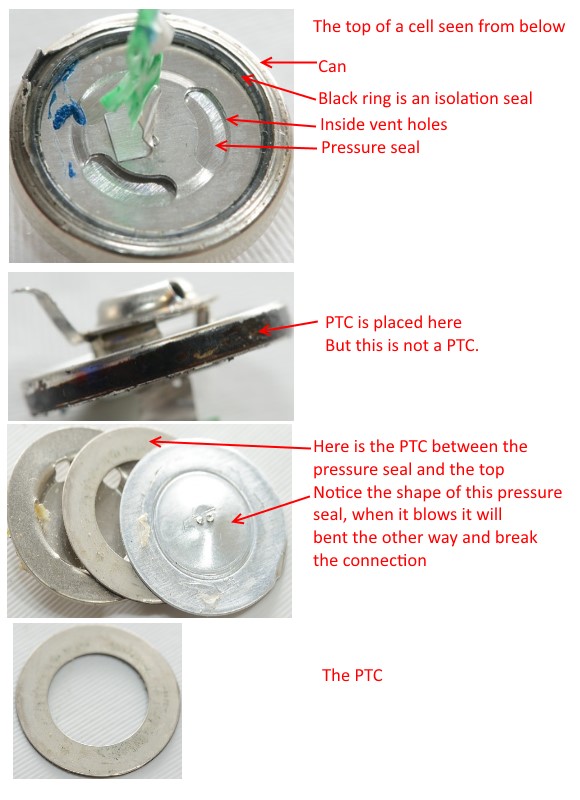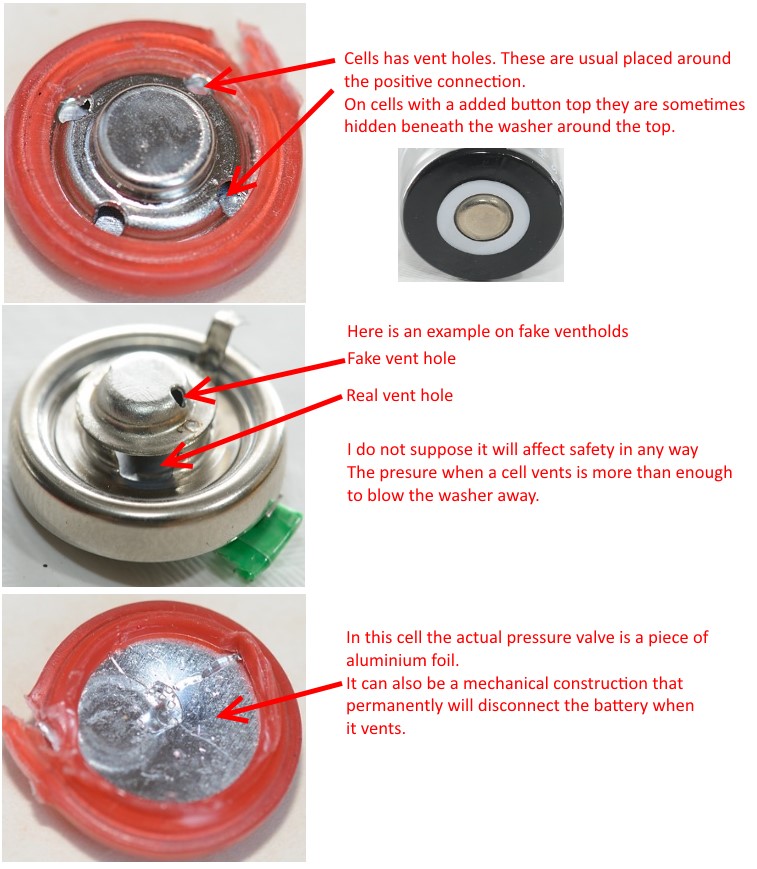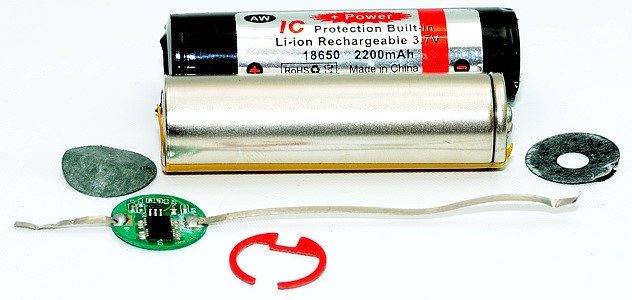


The inside of a battery can be very complex with many small mechanisms working together to provide you with the energy you need to keep your devices running, but what happens if there is a malfunction? A power surge? What if your battery begins venting?
There are a few things to look for when considering battery safety. You can have internal and external protective devices. Though not always visible by simply looking at the outside casing, these protective devices are very important to be aware of when purchasing batteries.
PTC: Positive Temperature Coefficient


What is a PTC?
A PTC is a small round disc found towards the top of your battery inside the casing. Typically it is settled between a pressure seal and the top of the battery. It stands for Positive Temperature Coefficient Switch.
How does it work?
This is an internal protective device. PTCs are already built into the majority of 18650 batteries. It is a small disc that is found at the top of a battery underneath the packaging. The PTC has a low resistance at normal temperatures. However, if there is a current surge and the battery heats up significantly, the PTC will then increase its resistance to help prevent your battery from becoming burned out by breaking the connection. It self-cools and does not ruin the battery if activated. Of course, if the PTC is tripped multiple times, it will affect battery performance.
CIDs: Current Interruption Devices
What is a CID?
A CID, which stands for Current Interrupt Device, is built into many 18650 batteries. It is also found inside of your battery near the PTC underneath the packaging. It is a pressure valve which will permanently ruin the cell if the pressure exceeds limitations.
How does it work?
Similar to the PTC, a CID is an extra protection method that will disrupt the connection in a battery if it gets too hot. Imagine you are pumping your car tire full of air and each tire has to be filled to an optimal level of 32 PSI. What would happen if your tire got to 45 PSI? It would pop! When the pressure inside a battery reaches high levels and becomes overcharged, the CID will disrupt the connection of the positive terminal. It works by venting the gas through a hole in the top of your battery to prevent explosions, should your battery ever dangerously become overheated.


PCBs: Protection Circuit Board


What is a PCB?
A PCB, Protection Circuit Board (Or sometimes referred to as Protection Circuit Module, PCM), is visible on the bottom of your battery by looking at the packaging. You can tell it is there if your battery is longer than a known unprotected version, if the bottom of your battery differs in color from the top, and you can feel the pole connecting wire on the side of your battery.
How does it work?
A PCB works by protecting your battery from overcharging, over-discharging, and short-circuiting. It features a wire on either side connecting both the positive and negative poles, working to monitor battery voltage and the current flowing through it. The two most important mechanisms are the controller chip and the switch used to disconnect or connect the battery. This communicates to detect problematic issues such as overcharging.
Note: It is important to purchase quality products from reputable companies. Look at the packaging of your product to ensure your battery is protected. Buying from cheap companies also runs the risk of defective products.





Login and Registration Form